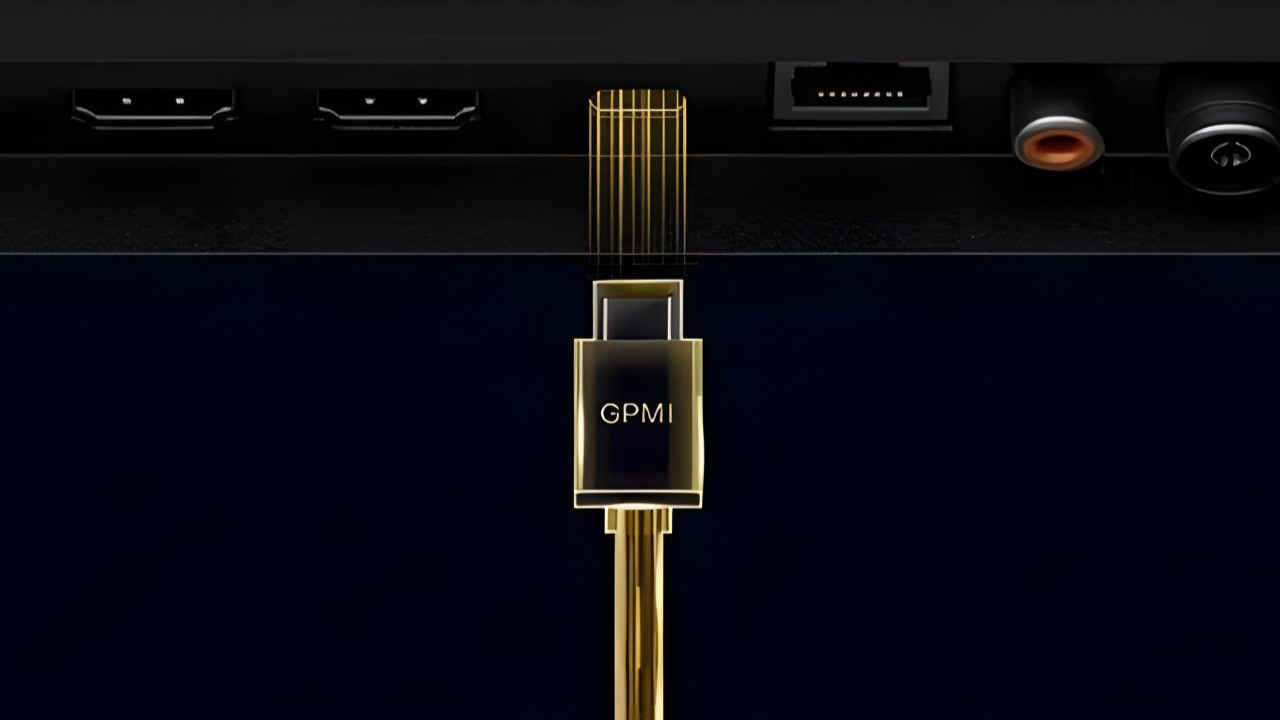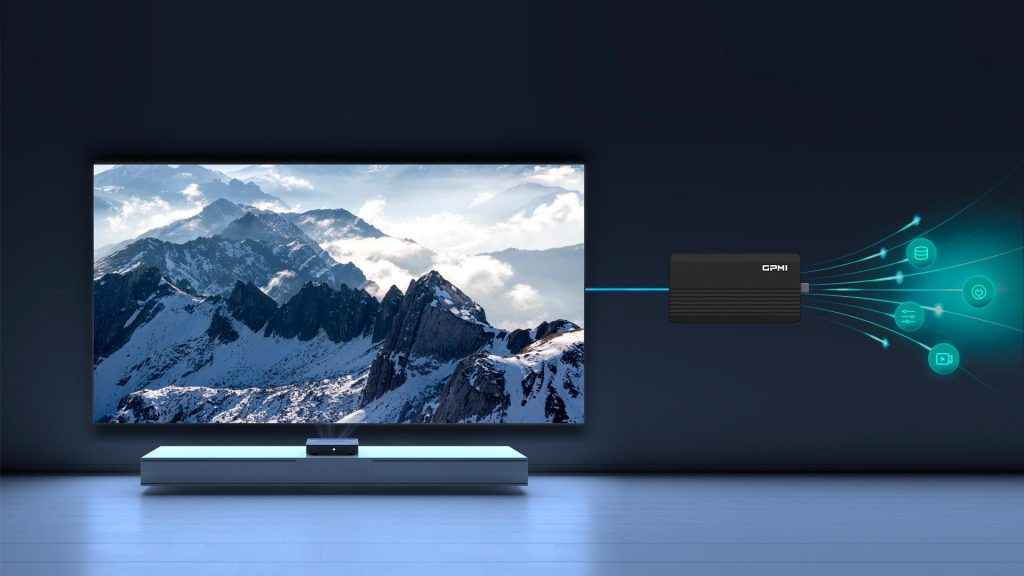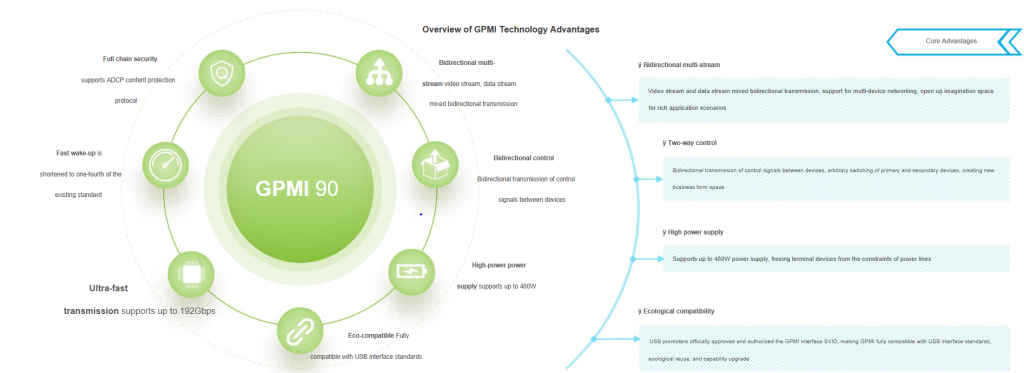China’s new cable standard GPMI is challenging western connectivity dominance

The battle for cable connectivity has taken a dramatic turn as China revealed its General Purpose Media Interface (GPMI) standard. With capabilities that significantly outperform established Western standards like HDMI, DisplayPort, and USB-C, this new technology promises to change how devices connect by delivering bandwidth of up to 192 Gbps and power delivery reaching 480W through a single cable. Developed by an alliance of more than 50 Chinese companies, GPMI represents not merely an alternative to existing standards but a comprehensive reimagining of device connectivity that could reshape the technology landscape and reduce dependence on Western-controlled interfaces.
Origins and development of GPMI
The General Purpose Media Interface emerged from the collaborative efforts of the Shenzhen 8K Ultra High Definition Video Industry Collaboration Alliance, a group of over 50 Chinese technology companies, including prominent manufacturers such as Huawei, Hisense, TCL, and Skyworth. Development of this standard began in 2019 when the Alliance established a dedicated working group to research next-generation connectivity solutions.

After years of technical innovation and industry cooperation, GPMI has progressed from concept to reality. The technology reached a significant milestone in December 2024 when it received authorisation from the USB organisation with an assigned SVID (0xFF10), enabling seamless integration with the Type-C ecosystem.
In February 2025, the Alliance formally published five series of group standards under the “General Purpose Multimedia Interface Specification”, marking China’s establishment of a unified, standardised, and forward-looking framework for multimedia connectivity.
Technical specifications and capabilities
GPMI is available in two distinct variants, each offering substantial improvements over current standards. The GPMI Type-C version is compatible with the existing USB-C standard, making it immediately accessible within the current device ecosystem. It delivers impressive specifications with 96 Gbps bandwidth (more than double the 40 Gbps limit of USB4 and Thunderbolt 4) and 240W power delivery capacity (matching USB-C Extended Power Range standard).
The larger proprietary GPMI Type-B connector pushes boundaries even further with 192 Gbps bandwidth (four times that of HDMI 2.1) and 480W power delivery (sufficient for powering high-end gaming laptops). This makes it particularly suitable for demanding applications requiring both high data throughput and significant power delivery.
The technology supports bidirectional communication, allowing seamless transmission of video, audio, data, and power over a single cable. The standard’s architecture includes a primary data link that can be configured in various ways to adapt to different usage scenarios.

GPMI also implements an alternative to HDCP content protection called ADCP, which is based on Chinese national security algorithms (SM3 and SM4) and offers significantly faster connection times compared to HDMI. Additionally, the standard supports fast wake-up capabilities, reduced to one-quarter of the time required by existing standards.
Practical applications and advantages
The practical benefits of GPMI extend across multiple use cases, delivering significant improvements in user experience and system design. By integrating audio/video transmission, data transfer, networking, control signals, and power delivery into a single interface, GPMI drastically reduces cable complexity.
This “all-in-one” approach means users can connect devices with just one cable instead of the multiple connections typically required. For example, a gaming laptop could receive both power and connect to an external display through a single GPMI cable, eliminating cable clutter.

With its high bandwidth, GPMI readily supports 8K resolution content, which requires four times the data of 4K and sixteen times that of 1080p resolution. This makes it future-proof for next-generation displays and content formats. The standard’s bidirectional capabilities also enable novel applications, such as using a television remote to control connected devices like set-top boxes.
GPMI supports daisy-chain networking technology that allows multiple devices to be connected in series through a single line. This significantly reduces installation costs for multi-device setups such as home entertainment systems (connecting speakers, game consoles) or outdoor display walls.
The bidirectional control protocol implemented in GPMI enables cross-device reverse control, allowing users to control mobile games on a television using the TV remote or third-party controllers, effectively “transferring” the mobile ecosystem to the larger screen.
Comparison with existing standards
| Standard | Bandwidth | Power Delivery | Key Features |
|---|---|---|---|
| HDMI 2.1 TMDS | 18 Gbps | No Power | Widely adopted, standard for TVs and monitors |
| HDMI 2.1 FRL | 48 Gbps | No Power | Higher bandwidth, supports 8K/60Hz |
| DisplayPort 2.1 UHBR20 | 80 Gbps | 240W | Popular for PC monitors, supports 16K |
| Thunderbolt 4 | 40 Gbps | 100W | Widely adopted standard for TVs and monitors |
| USB4 | 40 Gbps | 240W (EPR) | Universal standard, high compatibility |
| GPMI Type-C | 96 Gbps | 240W | USB-C compatible, double USB4 bandwidth |
| GPMI Type-B | 192 Gbps | 480W | Highest bandwidth, powers gaming laptops |
When comparing GPMI with existing Western connectivity standards, the differences in capabilities become immediately apparent. HDMI 2.1 TMDS offers 18 Gbps bandwidth without power delivery capabilities, while HDMI 2.1 FRL increases this to 48 Gbps but still lacks power delivery functionality. DisplayPort 2.1 UHBR20 provides 80 Gbps bandwidth with 240W power delivery, making it the most capable Western standard currently available.
In contrast, GPMI Type-C delivers 96 Gbps bandwidth with 240W power delivery, already surpassing DisplayPort’s capabilities while maintaining compatibility with the USB-C ecosystem. The GPMI Type-B connector takes this even further with 192 Gbps bandwidth and 480W power delivery, offering more than double the bandwidth of DisplayPort 2.1 and twice the power delivery capacity.
This substantial performance advantage gives GPMI a technical edge over Western standards, particularly for applications requiring both high data throughput and significant power delivery. The ability to transmit 8K video content while simultaneously providing enough power for high-performance computing devices through a single cable represents a significant leap forward in connectivity technology.
Despite its impressive specifications, GPMI faces several challenges to global adoption. As a standard developed primarily by Chinese companies, it may encounter resistance in Western markets due to both technical and geopolitical considerations. The success of GPMI outside China will likely depend on how quickly mainstream devices implement the technology and its compatibility with existing cables and accessories.
Nevertheless, the practical advantages of GPMI, particularly its ability to reduce cable clutter and e-waste through combined power and data delivery, may prove compelling enough to drive broader adoption over time. The compatibility of GPMI Type-C with the existing USB-C ecosystem also provides a potential pathway for more gradual market penetration.
As this technology continues to develop and enter the market, it will be fascinating to observe whether GPMI represents the beginning of a significant shift in global connectivity standards or remains primarily a technology for the Chinese domestic market. Either way, its development clearly demonstrates China’s growing technological capabilities and ambition to establish leadership in fundamental technology standards that underpin our increasingly connected world.
Sagar Sharma
A software engineer who happens to love testing computers and sometimes they crash. While reviving his crashed system, you can find him reading literature, manga, or watering plants. View Full Profile




